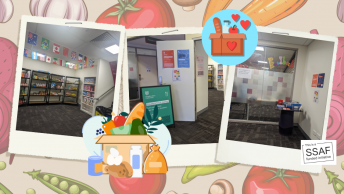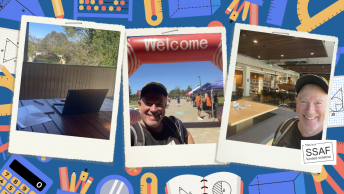This post is over three years old, the information may be outdated.
As a student, it’s likely you will be studying a lot, especially heading towards exams. But have you ever thought about how you study?
Research has shown that students perform better on exams if they study in a way that is best suited to their own personal learning style and the nature of the material that needs to be understood.
Knowing about the variety of learning styles and choosing the one that works for you in each situation may help you to succeed not only throughout the exam period but as you progress through your course as well.
The VARK Model
The VARK model is a useful model of learning. Developed in 1987 by Neil Fleming, this model details four different strategies for learning that an individual might utilise in their studies.
These include:
- Visual
- Auditory
- Read & Write
- Kinaesthetic
Visual
Just as the name sounds, visual learning relies on what learners see.
If you have a visual preference, you will probably learn best when you use graphics or diagrams. Colour is also a big part of the visual approach, and is why some people excel when they use different coloured highlighters in their notes. Annotating notes or readings will help you see and remember important points and connections.
Additionally, visual learners also watch lots of videos. It’s amazing what you can achieve when you watch things and they stick in your memory.
While high school was a while ago for me, I still remember watching a lot of YouTube videos during biology study sessions. I found a few videos that explained concepts and diagrams really well, and I actually performed better than I was expecting. You might like to try a similar approach to see if it helps you as well.
Auditory
Again, as the name suggests, the auditory method is suited to people who learn best when they listen – or those who have no option because that is the way material is presented!
Some people find note-taking doesn’t help them absorb knowledge, but listening to information seems to do wonders.
To improve your auditory learning skills, try the following:
- ask your lecturer plenty of questions
- record your lectures
- record yourself reading information (you can even use your phone for this) or summarising what you have to learn. Play these recordings while you are driving, travelling on public transport, or as you go to sleep.
- watch videos
- actively participate in discussions – your peers’ thoughts can be a valuable resource.
Read & Write
This is a traditional way of learning, involving a lot of note-taking and reciting. It isn’t as simple as that, though. There are a few ways for you to perfect this method and exceed in your studies.
Firstly, and not surprisingly, take down as many notes as possible and rewrite them in your own words. That way, when you read them back you will be recalling your own thoughts and notes rather than notes that are from a book.
Some information in modules and books can be dull and lengthy at times. To make it easier, try to create dot points with the most crucial information. That way there is less to read but you are still absorbing all the important stuff.
If words are your thing, try to recreate diagrams and pictures into your own written notes. Finally, if your lecturer puts effort into creating handouts and information to circulate to your class, don’t lose them. Take the time to check them out – there might be some handy things in it to help you.
Kinaesthetic Learners
Kinaesthetic learning happens when people are being physically active and engaged. This method may really help students in a practical subject such as paramedics and nursing.
When writing notes, kinaesthetic learners should use plenty of examples. Make these examples as closely related to you as possible. Often that will help you remember them.
Studies have shown that kinaesthetic learners enjoy discussion. Talking about what you have learnt and studying with your friends and peers is a great way to remember information. Just make sure you don’t get distracted or go off topic.
Even simple and repetitive physical activities like walking, running, or bouncing a ball can help kinaesthetic learners when they are trying to memorise or understand information.
Try to experiment with a few different methods to find out what works for you.
If you need some extra information or help for your assessments and exams, don’t forget about Charles Sturt University’s Academic Skills Team. There are many services available to you, such as workshops, study skills, referencing and more. This Success in Exams guide is a great place to start.
Best of luck for your exams.










